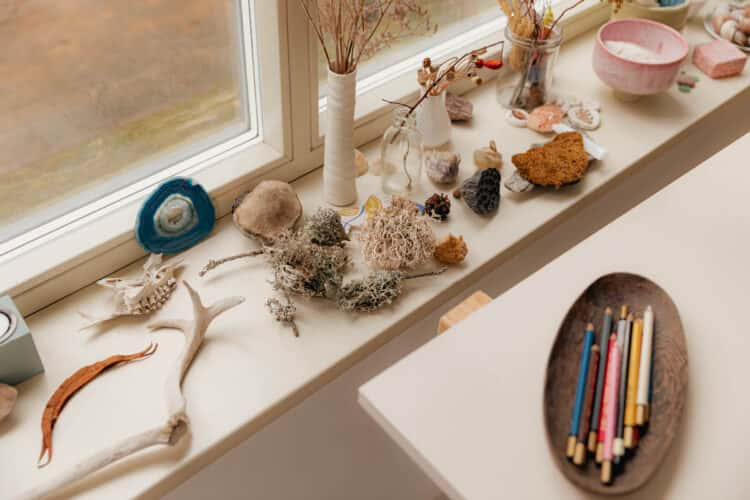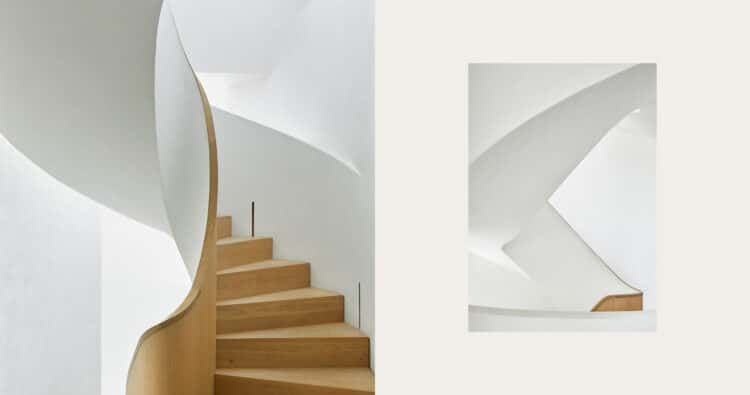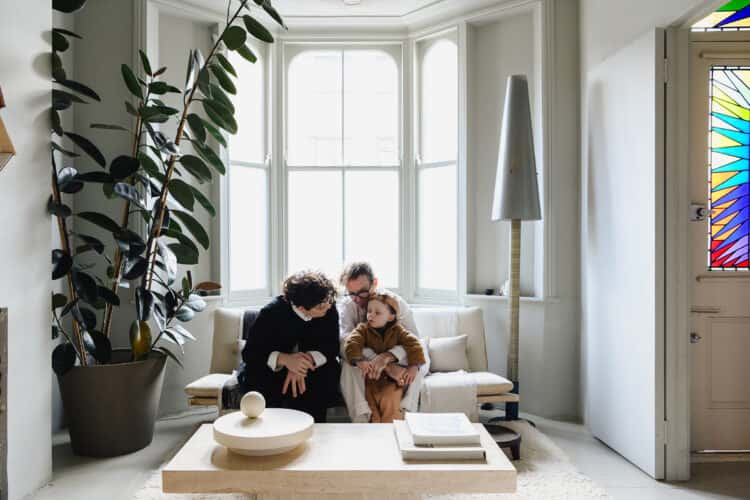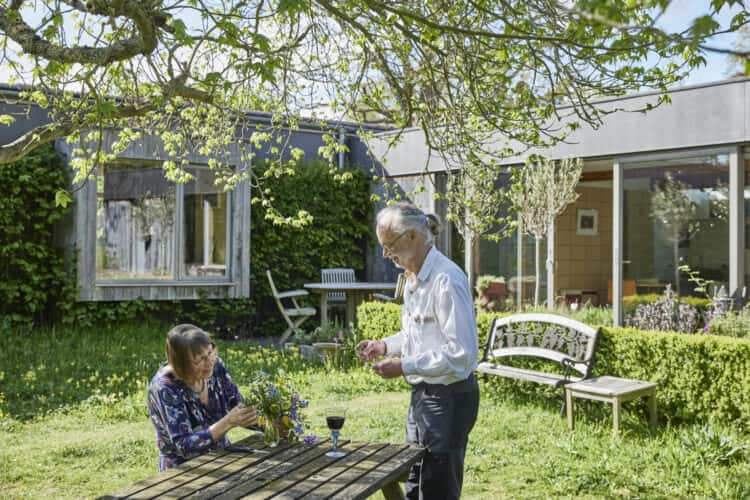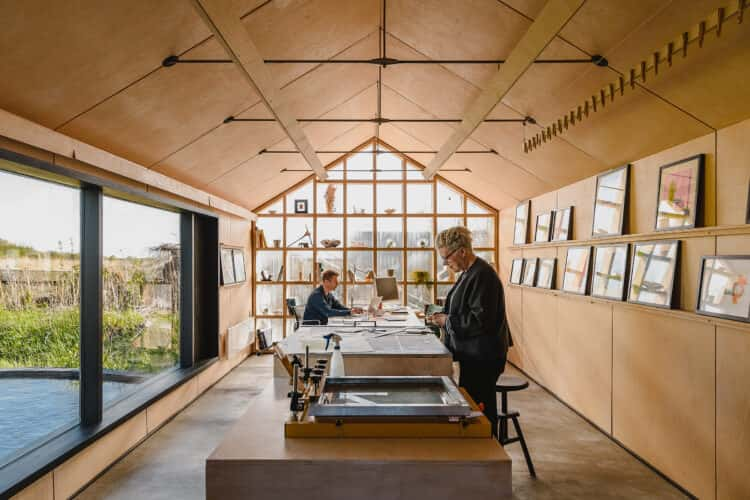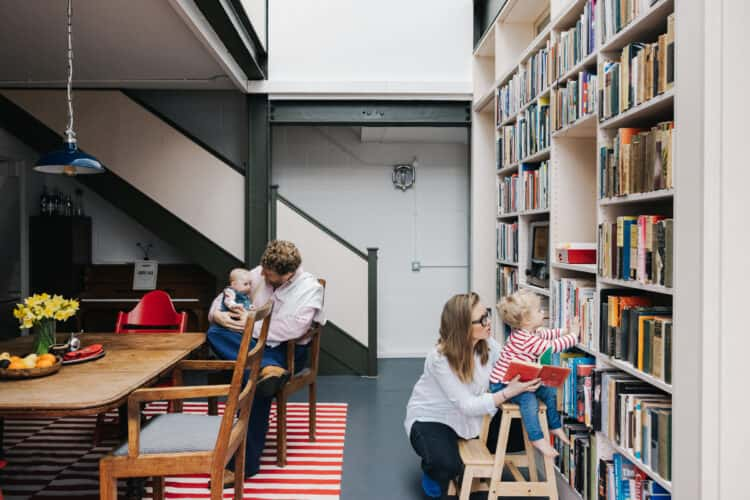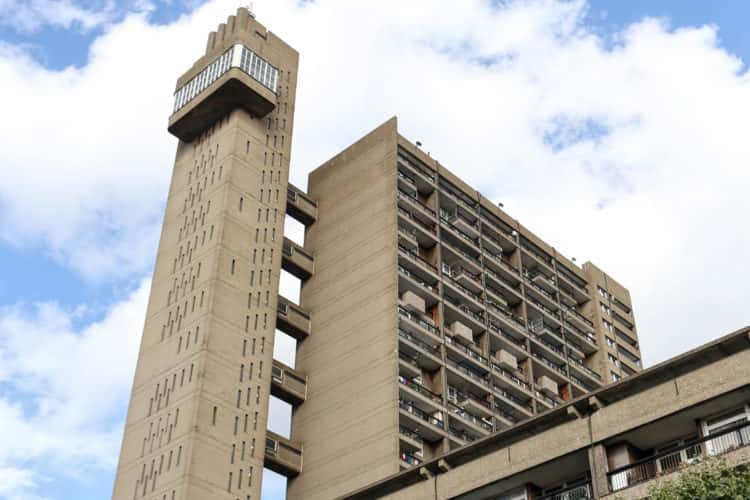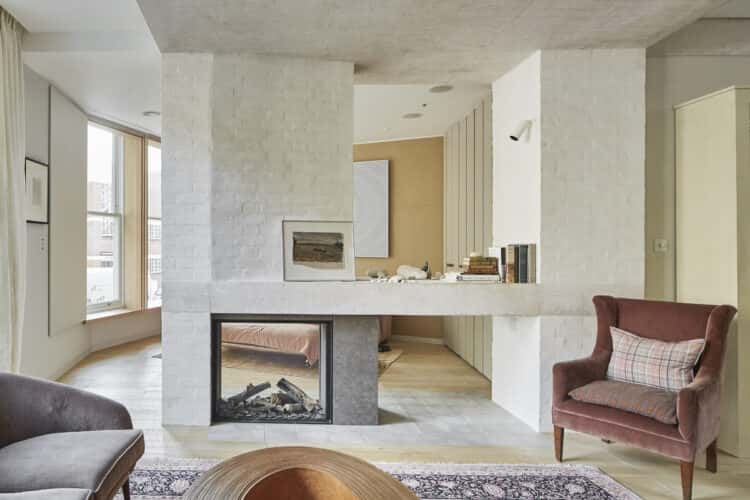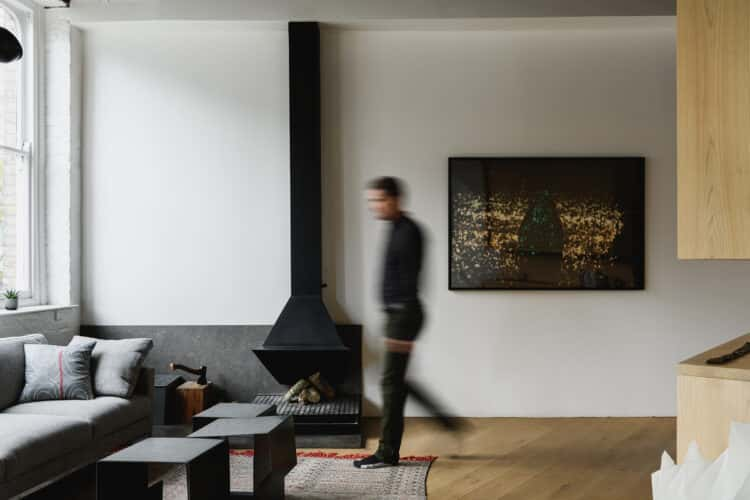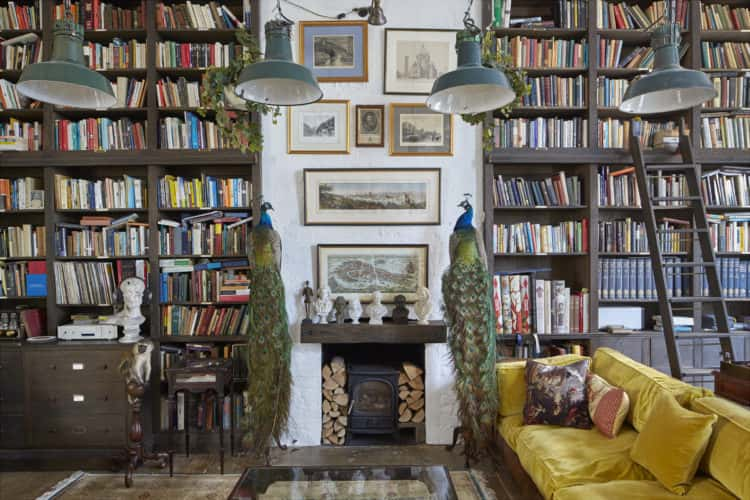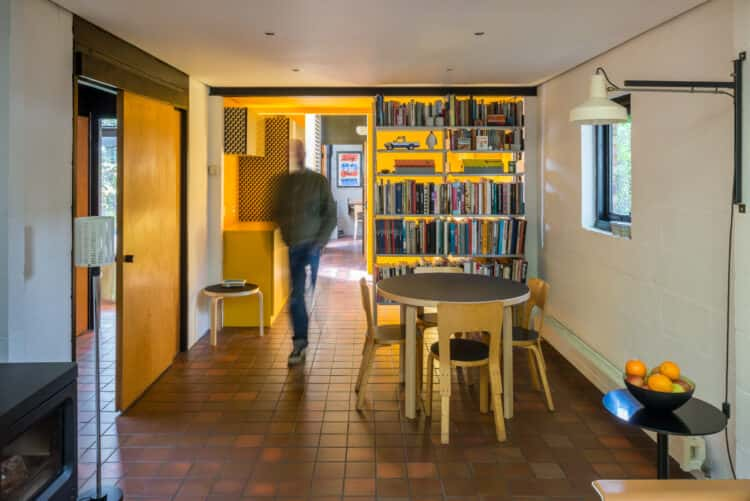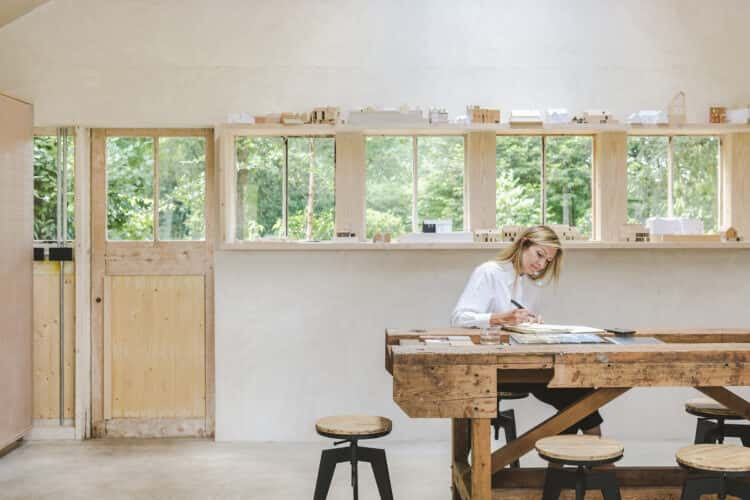My Modern House: inspired by its dramatic setting, two architects design an urban “cabin in the woods” in East Berlin
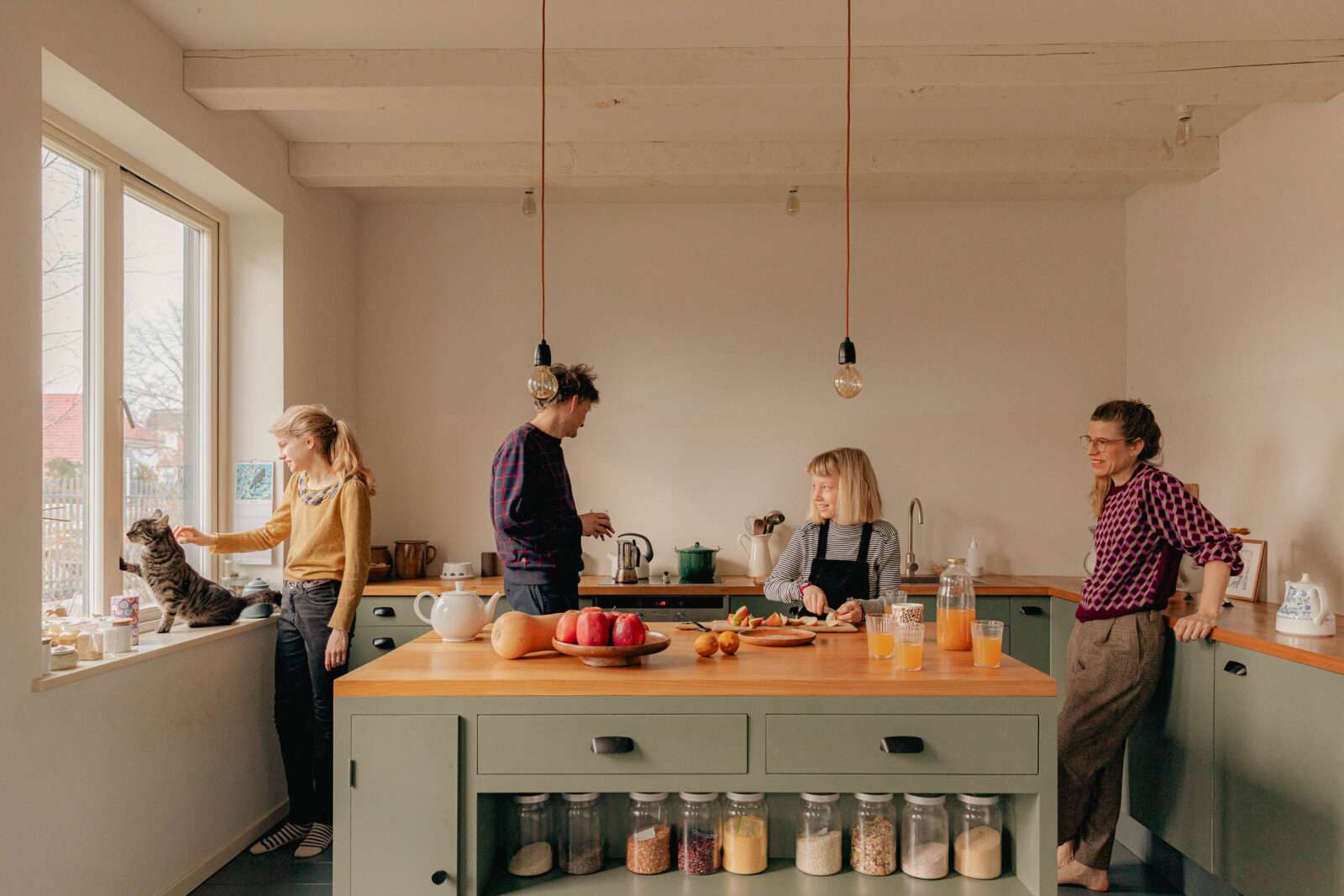
The owners, Oskar Söllner and Insa Wagner, work together as architects at their Berlin practice, Söllner Wagner, which designs a mix of residential and public projects. In 2013, they had found themselves in need of a new home after their rented apartment went on the market, a predicament familiar to many in Berlin.
The oversized fir trees that surrounded the house they found were the initial inspiration for what came to be known as the Waldhaus. Built in just one year, the project was an experiment in hand-building a sustainable timber house without a construction company. With its steep gable roof, black-painted larch walls and rustic setting, the Waldhaus now looks like something out of an urban fairytale. Here the couple share their experience of designing a family home, and the mix of cutting-edge, sustainable materials and traditional German craftsmanship that drove the build.
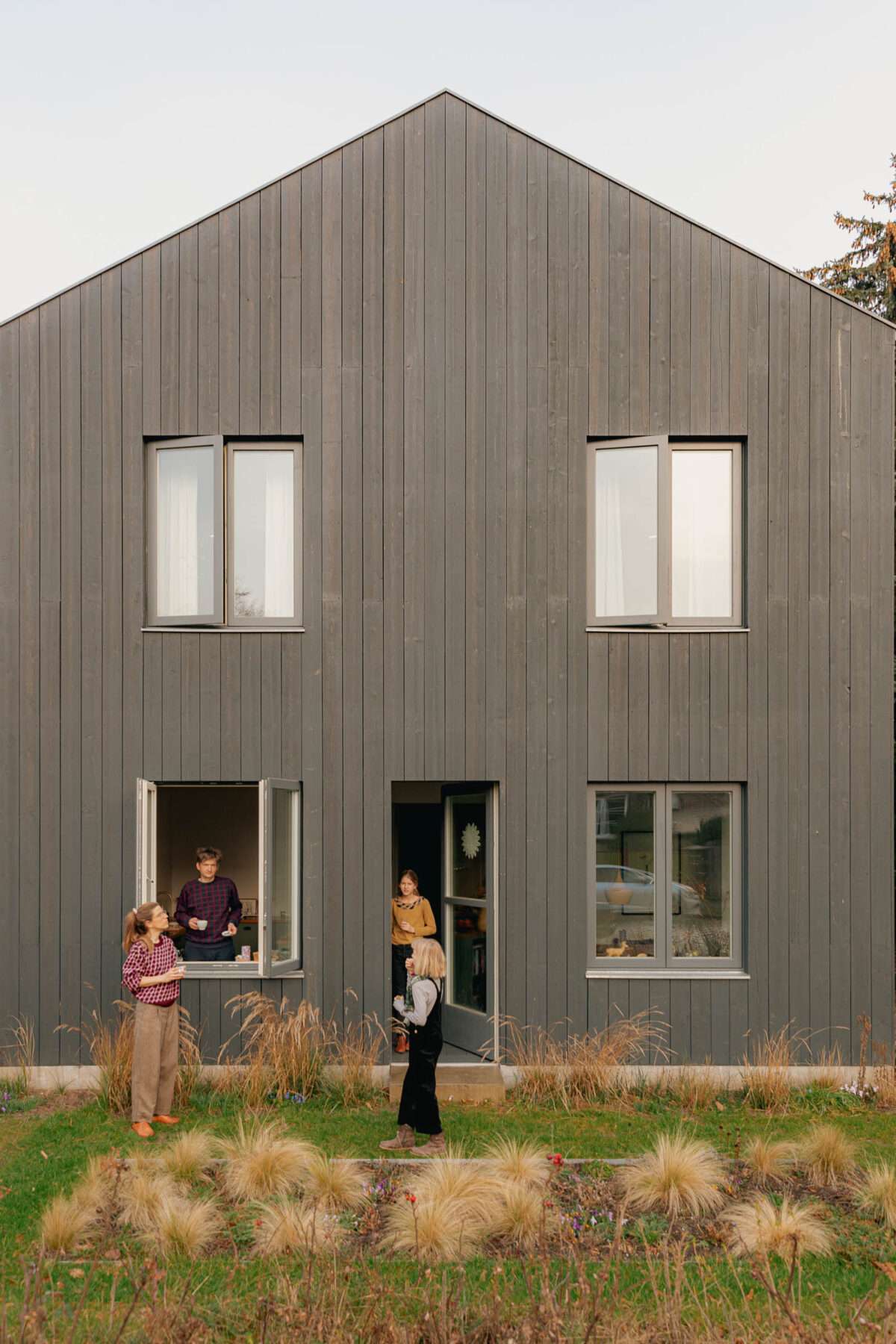
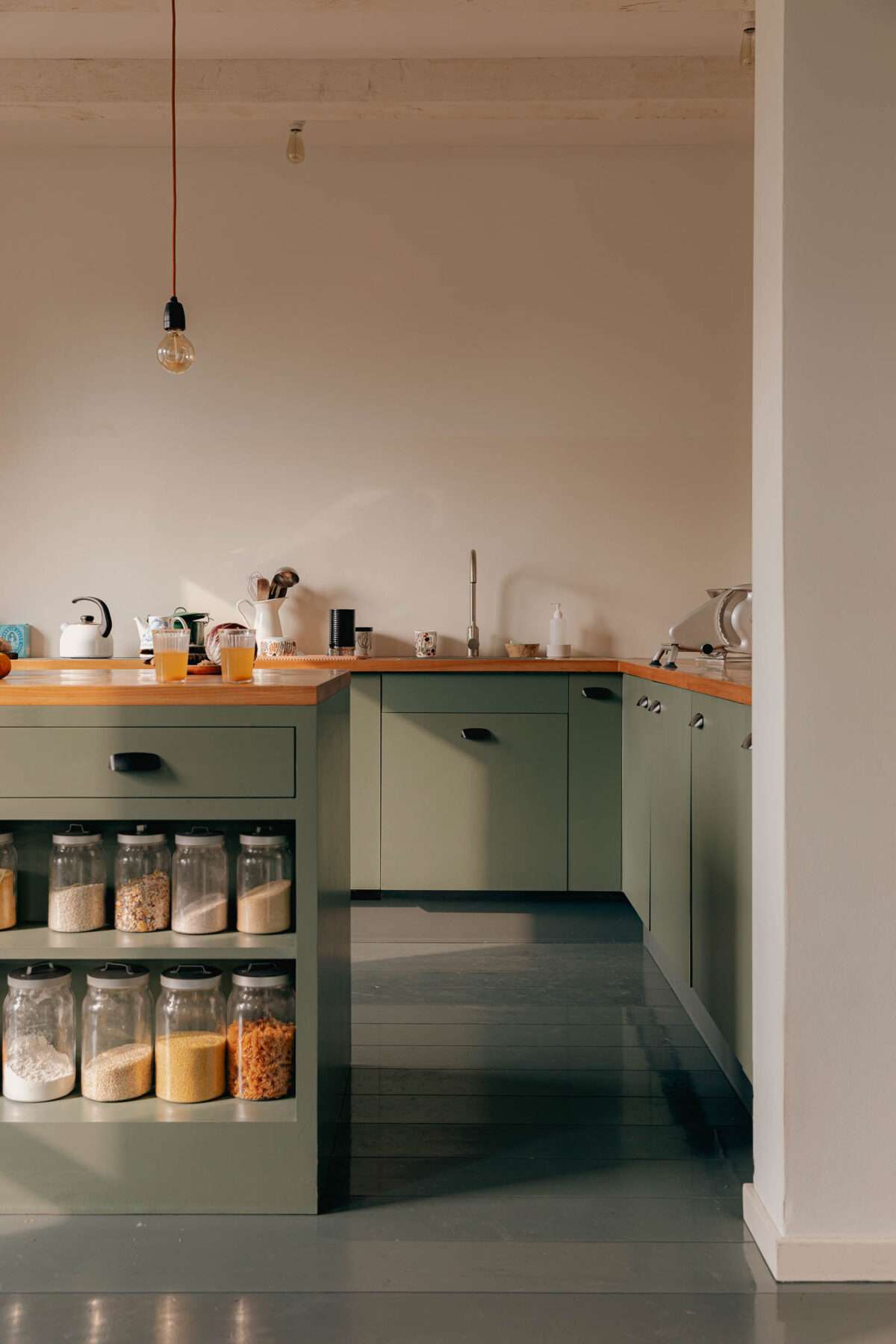
Oskar: “We weren’t planning to move but found ourselves thinking about a new home unexpectedly when we were told that our landlord wanted to sell up. We were living in an Altbau apartment built in the Gründerzeithaus, or Founders, period (1870-1914) in Pankow, which we had recently renovated. We had the option to either buy the apartment ourselves, or to stay on as tenants, most likely with increased rent.
“However, the rent was already high and we wanted a garden and some more living space for our two young daughters. So we started looking around for either a place to buy, or somewhere to build. We came across this block by chance while out walking one day, and quickly decided to buy it.
“We had already designed many houses at our architectural practice, and renovated an old country house. We knew that this time we didn’t want to renovate yet again, but instead to try building a house ourselves from timber, with a garden-side studio.
“The block is on a quiet street in Pankow, a characterful suburb in East Berlin with a mix of housing, including old villas, houses from the Thirties and post-war housing, with the Schonhausen Palace and parklands nearby.
“The existing house wasn’t worth renovating, as it was very run down, but we liked the huge fir trees that surrounded it. These gave us the idea of designing a cabin in the woods, which we named the Waldhaus.”
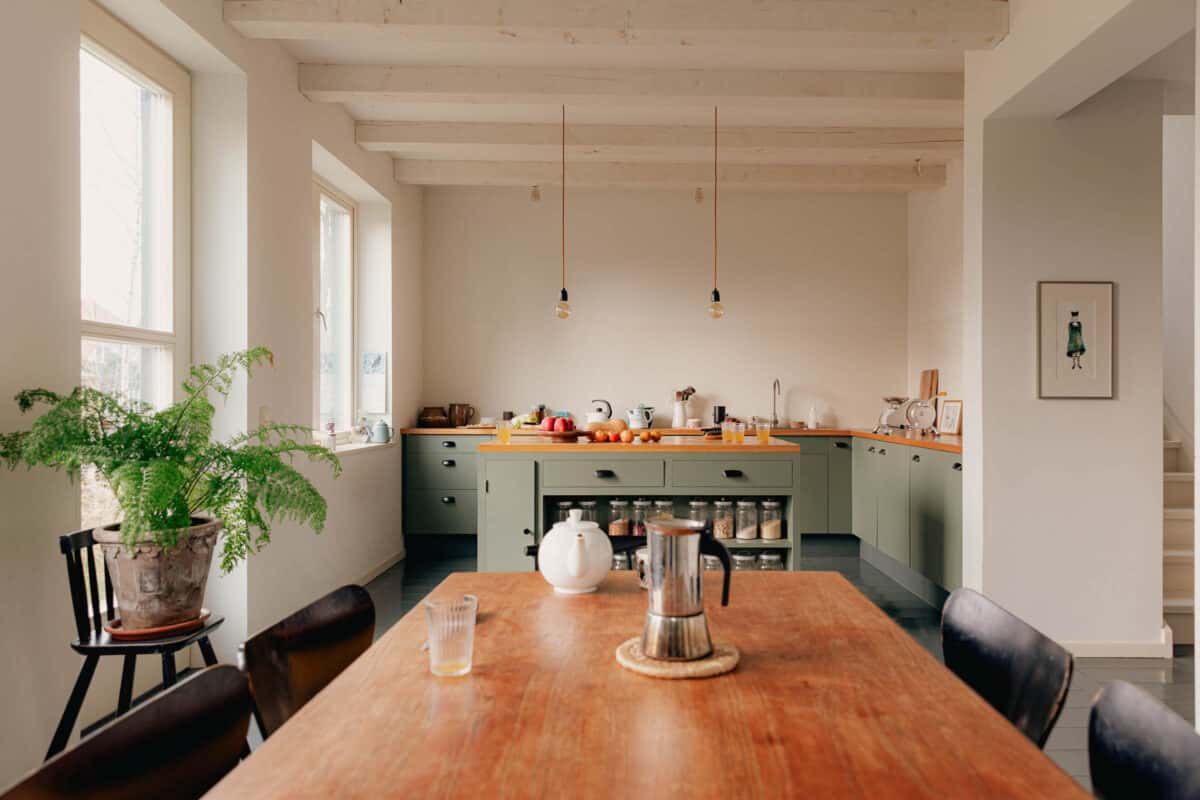
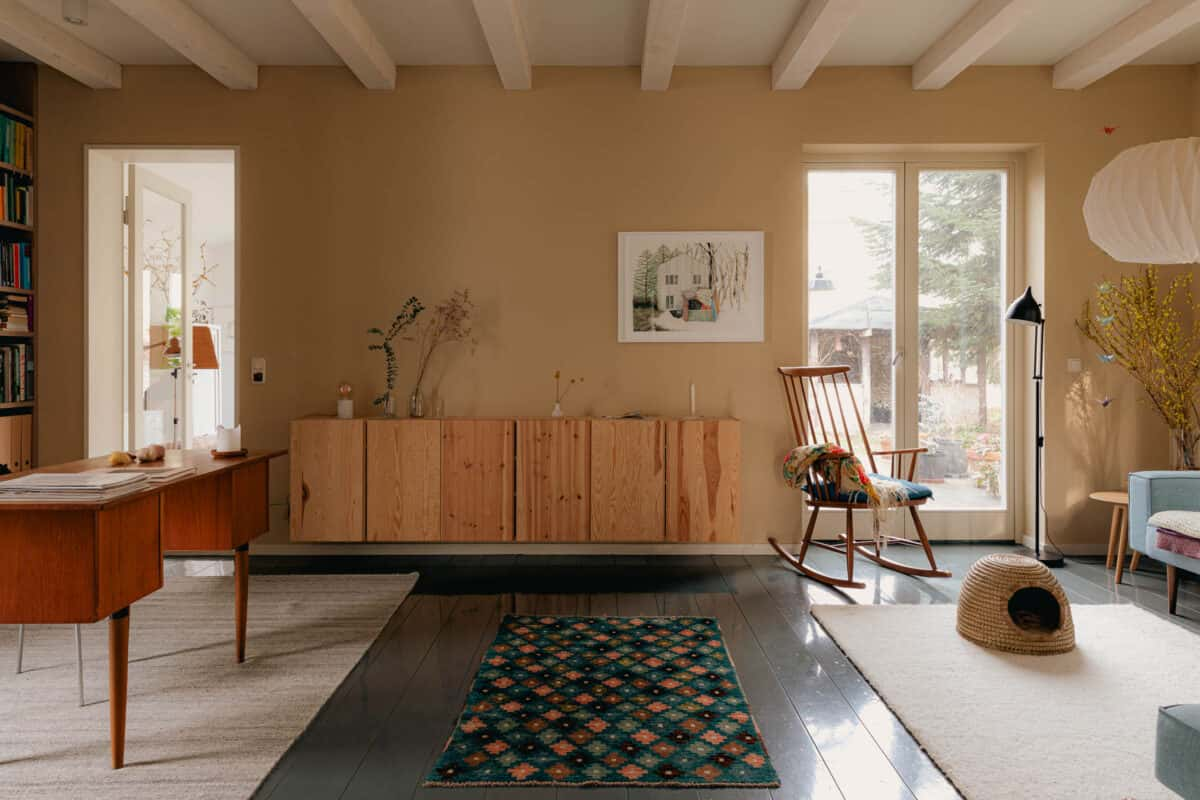
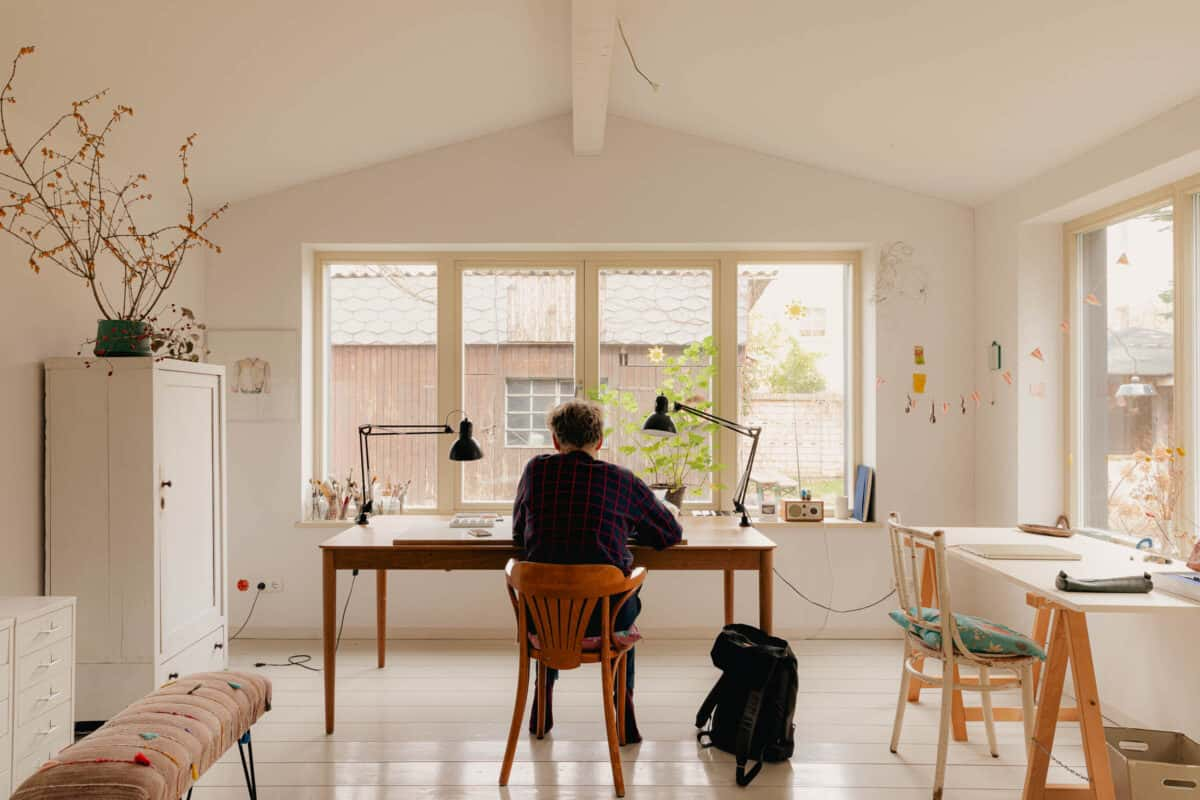
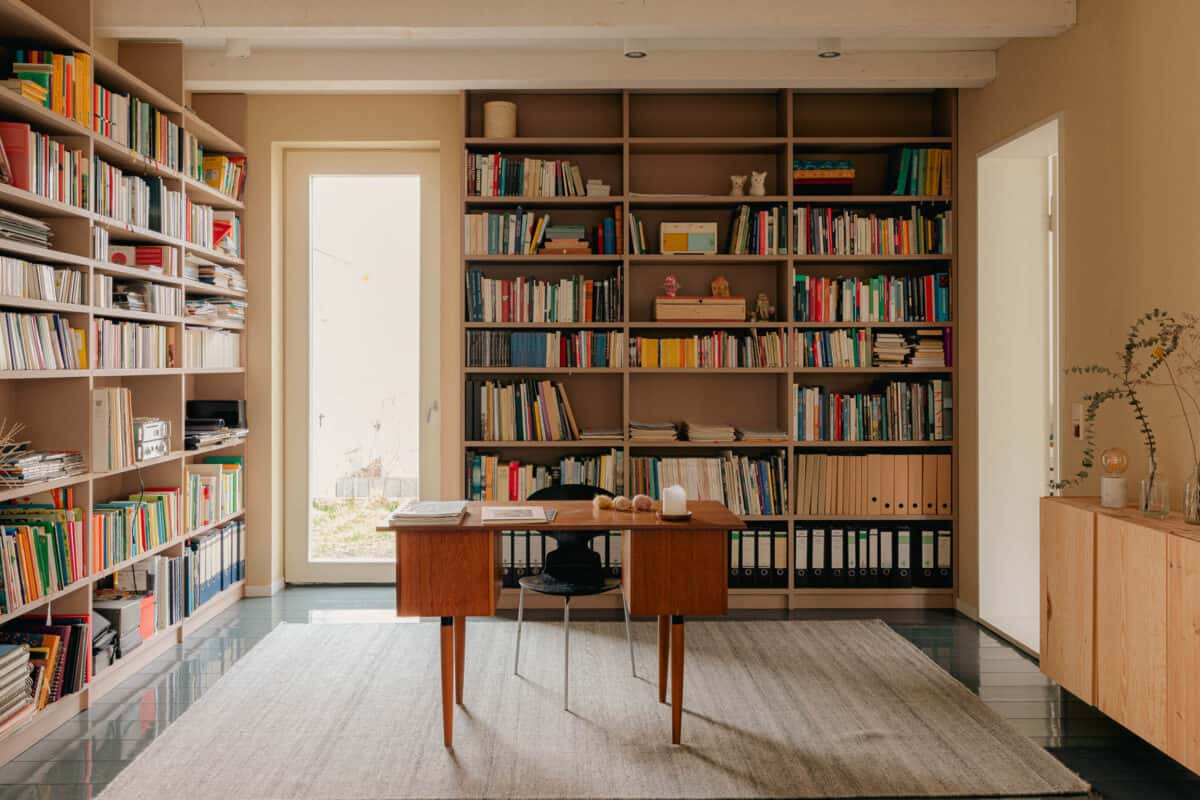
Insa: “We didn’t use a building company, although we did appoint independent tradespeople for some of the works. In our architectural studio our roles are clearly divided: my work includes all design tasks, from conceptual design to drafting of floor plans and façades, and material and colours choices. Oskar’s focus is on construction planning and technical implementation.
“Our intention was to build a wooden home with a classical gable façade. We clad it in sustainable larch, which we stained black, and insulated it with wood fibre insulation, so there is no plastic whatsoever in the build.
“It took us a year to build by hand, with a lot of help from our family and friends, in particular Oskar’s father. We completed it in October 2015, and we now live here with our daughters and two Norwegian Forest cats.”
Oskar: “On the ground floor we have an open-plan kitchen and dining room at the front of the house, with custom-designed kitchen cabinetry. This part of the house is full of light and warmth, especially in winter. In time we’ll plant more trees in the front garden to provide some sun shading in summer and privacy in winter when the leaves fall, but for now we have lots of dog roses growing along the front of the house.
“At the back of the house is a living room. Leading off from this, in a separate space overlooking the garden, is Insa’s studio, which is used for music, art and painting. There are many of her paintings on the walls of the house, including one that depicts our house, with the studio drawn as a children’s cubby house. This reflects our intention for it to be a space for creativity and play.
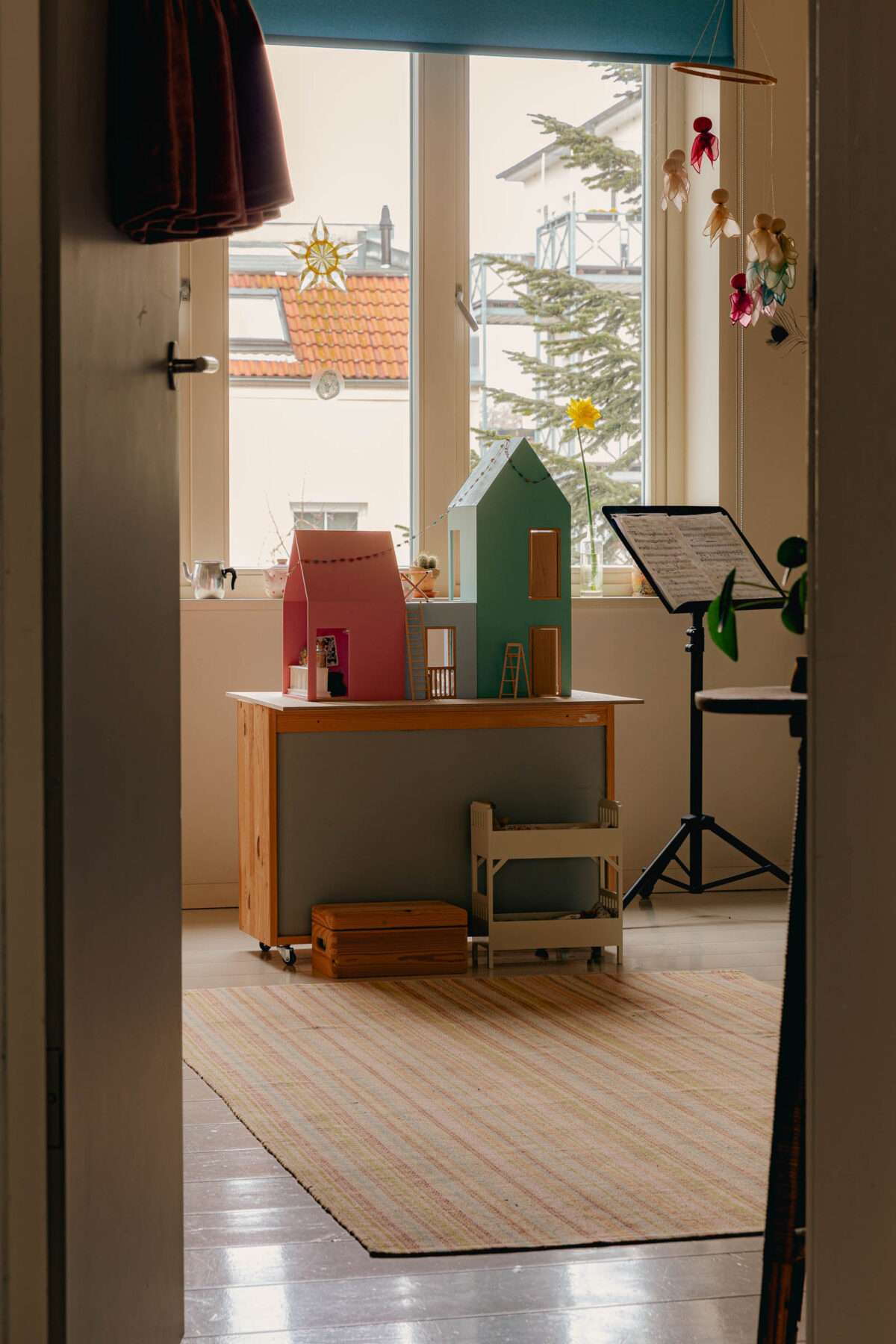
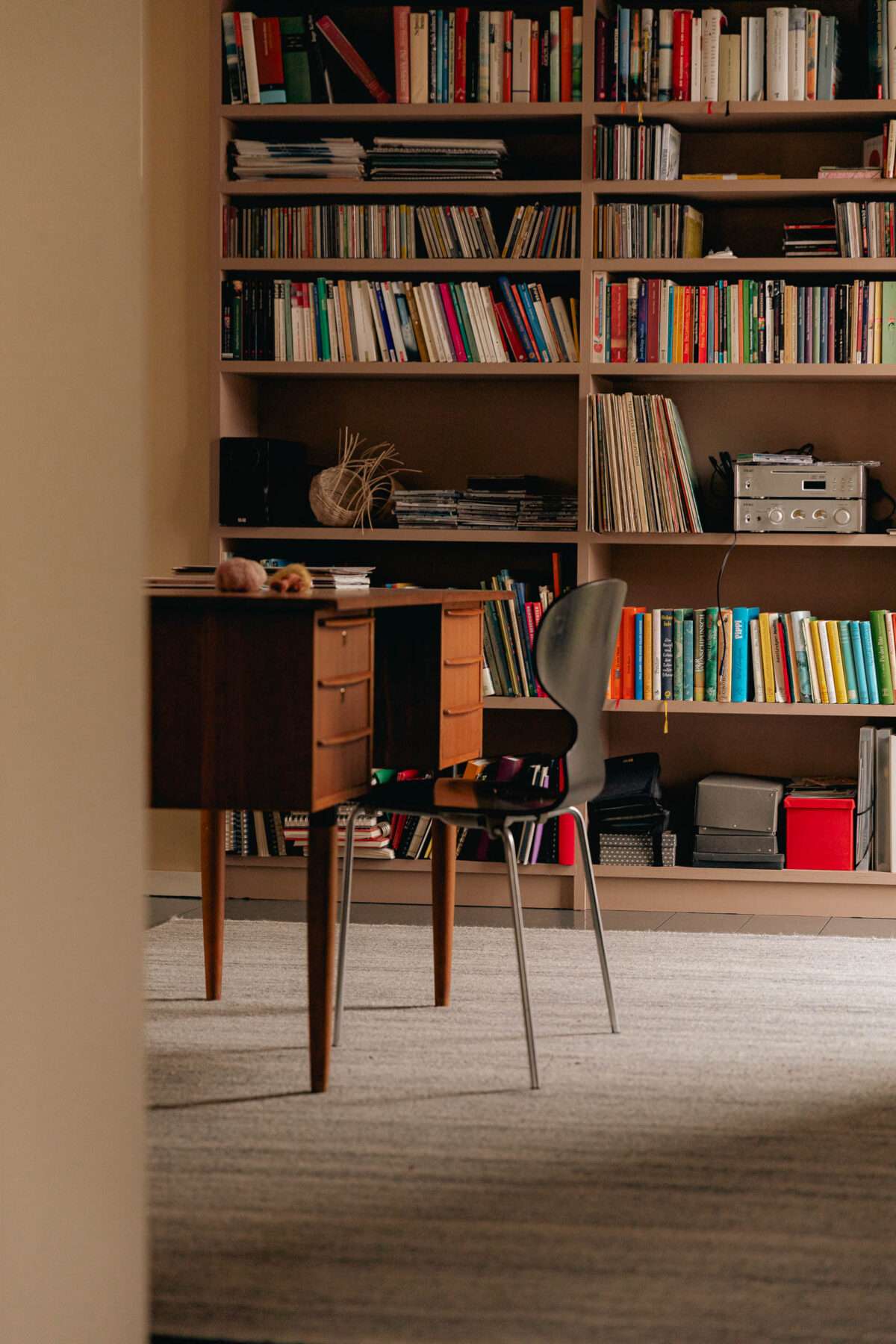
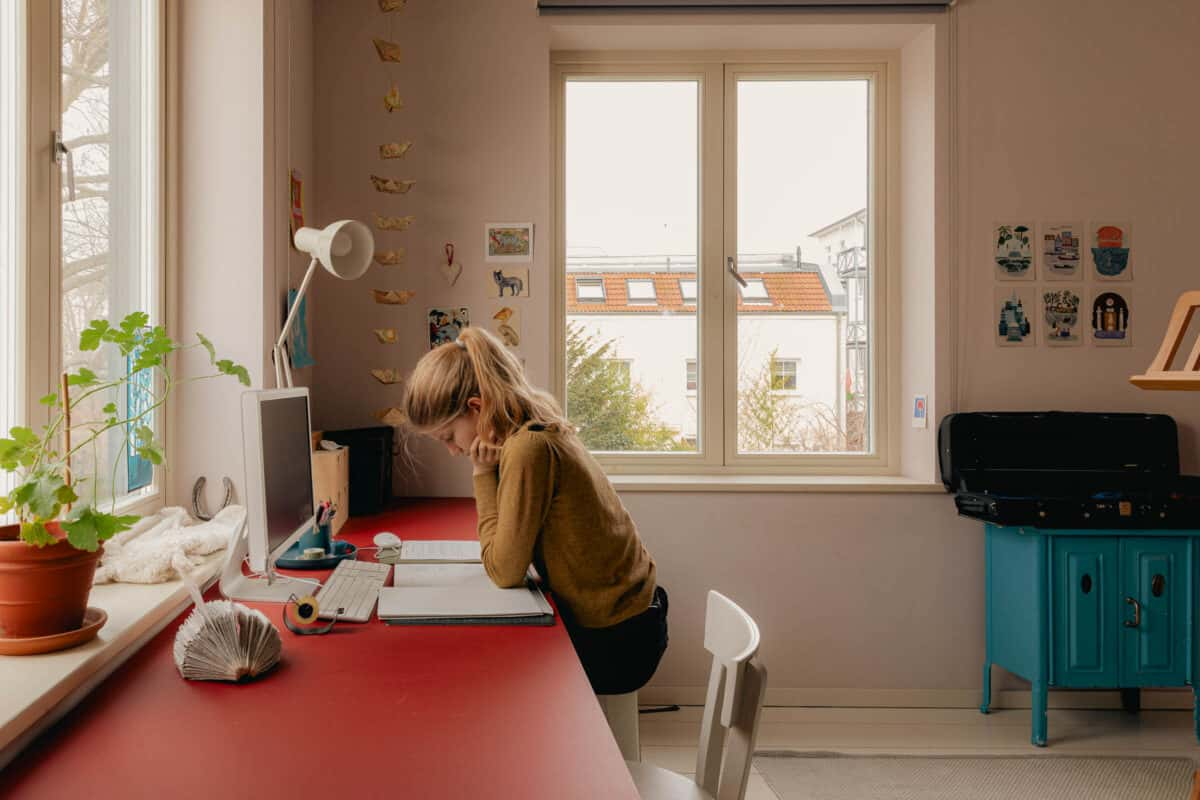
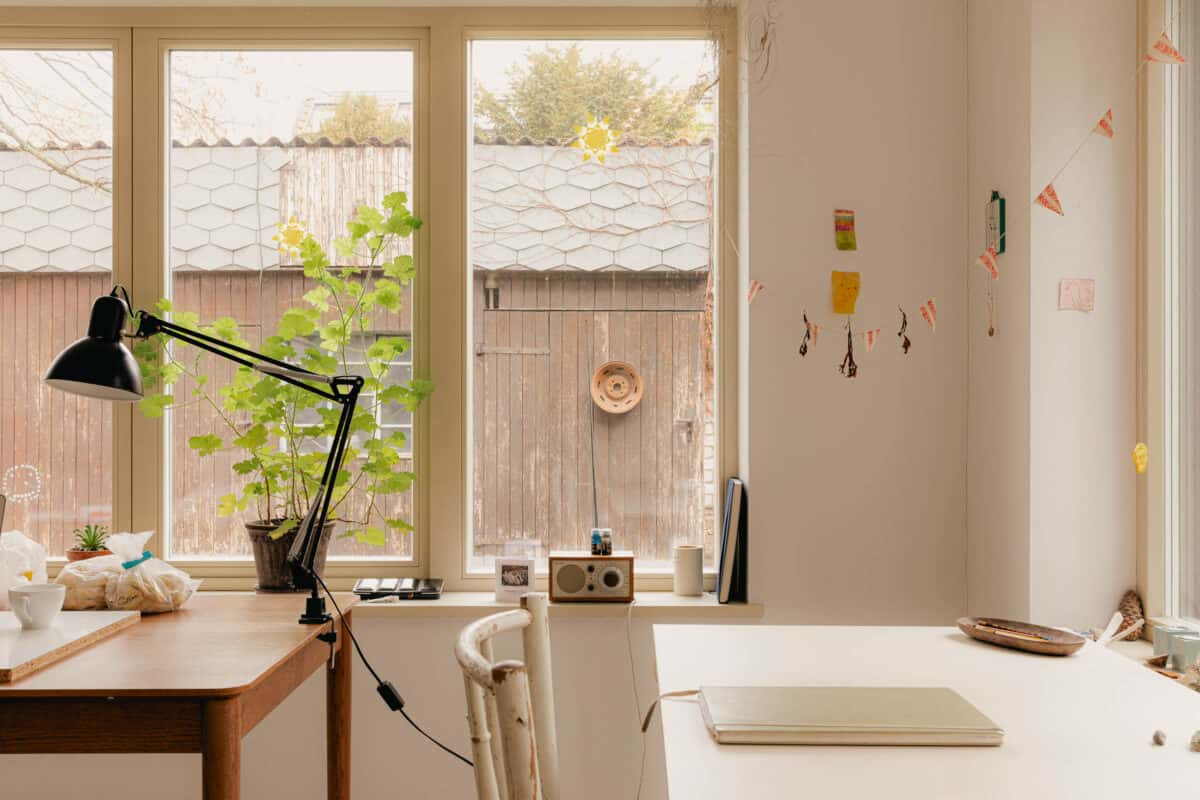
“Upstairs, there are four bedrooms and a family bathroom. We have underfloor heating throughout the house, including beneath the bathroom tiles, so it’s very warm year-round.
“While we wanted a house that is comfortable, well-insulated and modern in function, we also drew on classical 1930s architecture for some of the features, such as the wide timber floorboards and the winding staircase that leads to the first-floor bedrooms.”
Insa: “Another important aspect of this house for us was the choice of colours. There are many lacquered wood surfaces, including the floorboards, fitted wardrobes and doors, all built to our specifications by a carpenter.
“Colours have such a powerful effect on the atmosphere of a home, and it was important to us to select and coordinate them sensitively. In the kitchen we have a mix of green cabinets, cream walls, and lacquered grey floorboards, with exposed, pale timber ceiling beams. The living room walls are painted a taupe colour, which has a warm and restful feeling, and the studio is pure white with a gable ceiling. These different colours create a distinct atmosphere in every area of the house.”
Oskar: “Throughout the interiors we have a mix of modern and vintage pendant lights and table lamps, and our furniture is also a combination of Vintage 60s Scandinavian and new furniture. We like understated and Scandinavian design, and we feel that every material should have a sense of truth in its use.
“When designing the home, we also incorporated a lot of built-in cabinetry and bookcases to keep the different spaces organised and uncluttered. We also have a generous entrance room for hanging coats and taking off muddy boots before entering the rest of the house.
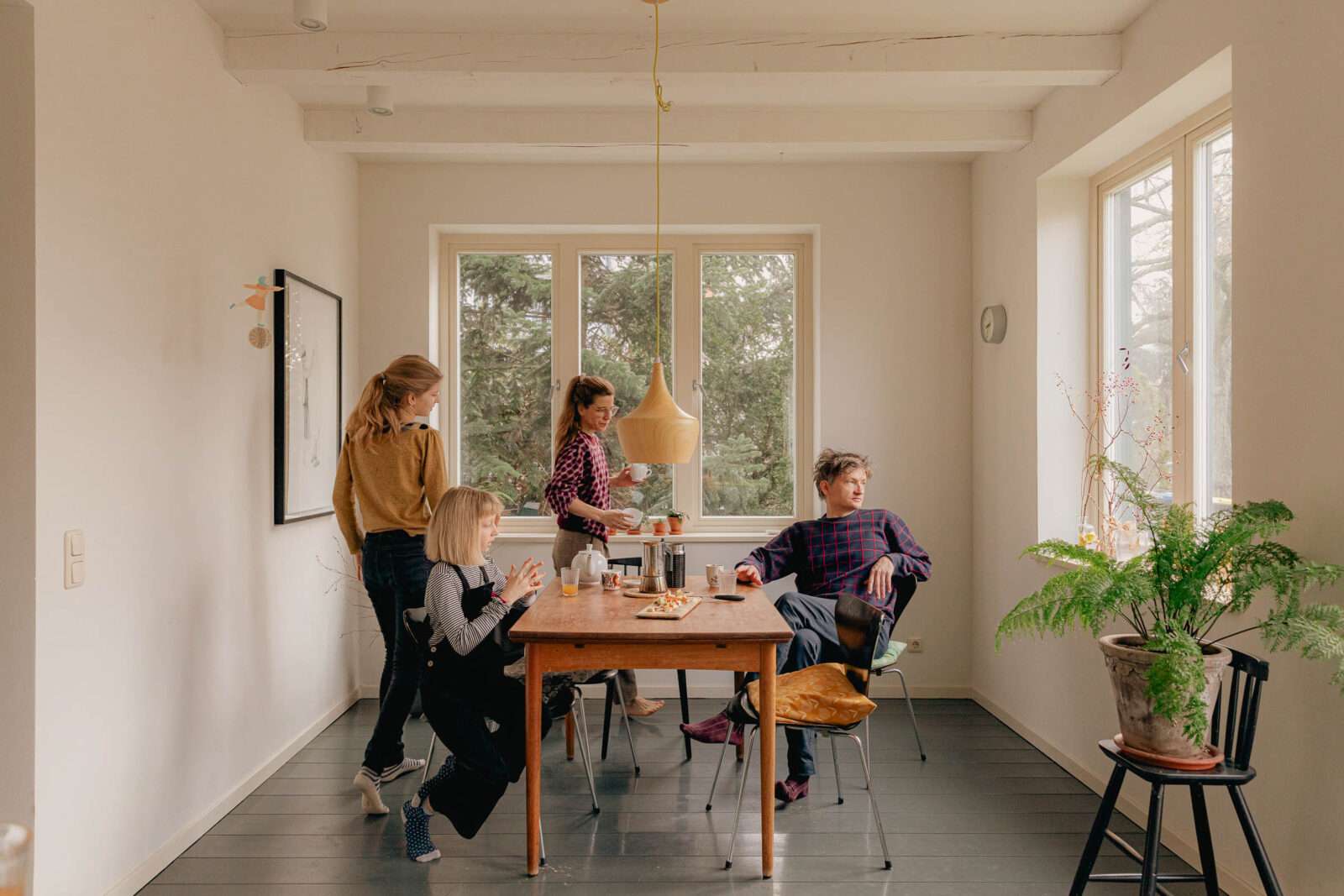
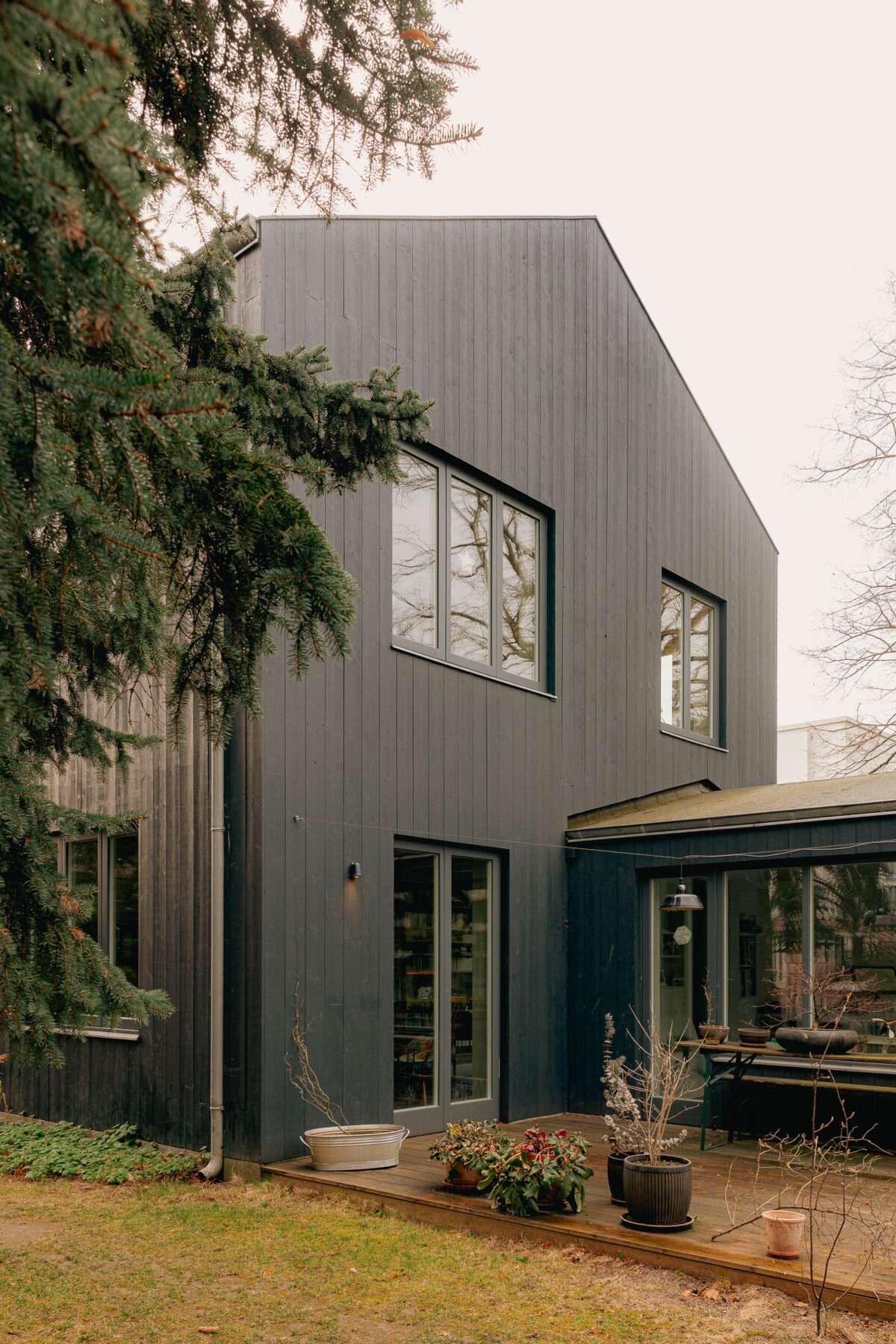
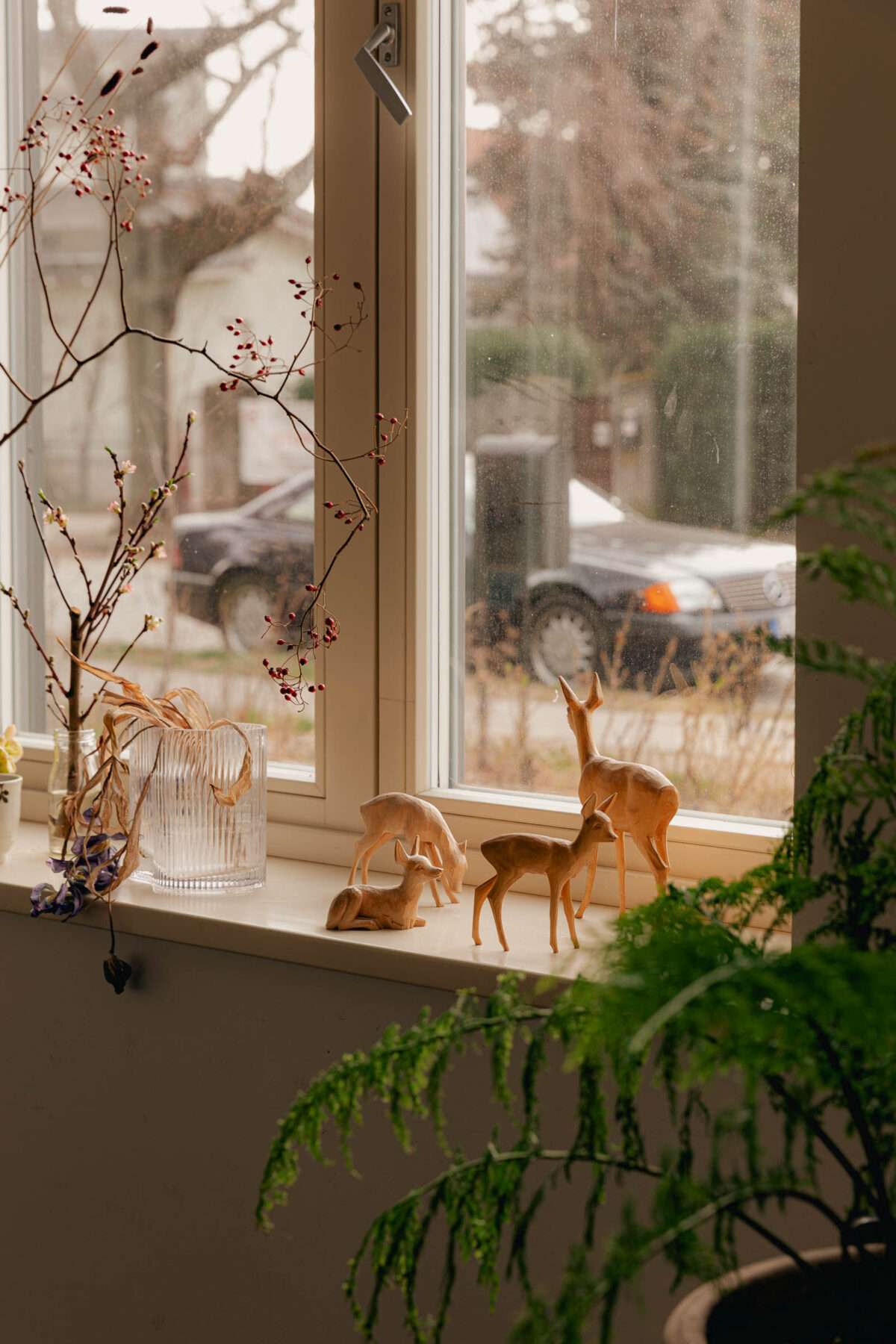
“Some of our furniture, such as the dining table, is old and marked, which contrasts with the newer elements. We don’t mind it when things show signs of age; it adds so much character.
“We designed the windows especially for this project. They are triple-glazed and open outwards, to bring in the trees, sky and surrounding buildings on warmer days. As architects, building our own home was a valuable learning experience. We know every part of this building, every screw, every nail, because we have held it in our own hands.”
Insa: “A few years ago we renovated an historic clay framework house from the 1940s in the historic Uckermark region, which is north east of Berlin. Our intention was not to completely transform the house, but rather for it to look as if we’d simply painted a few walls and refurbished the floorboards. Of course, in reality, the house was in very bad condition and almost all of the façade construction had to be replaced, along with a lot of other work. It was a very labour-intensive project, but in the end it looked as if it had always been there, and as though very little had been done to it – the kind of house someone might inherit from their grandmother.
“That kind of respectful renovation, that doesn’t aim to make everything look shiny and new, inspired us with this build. We wanted to use simple, honest materials and minimal industrially manufactured products. We think this creates a very warm and personal atmosphere. Every building project brings new challenges and new opportunities to learn.”
